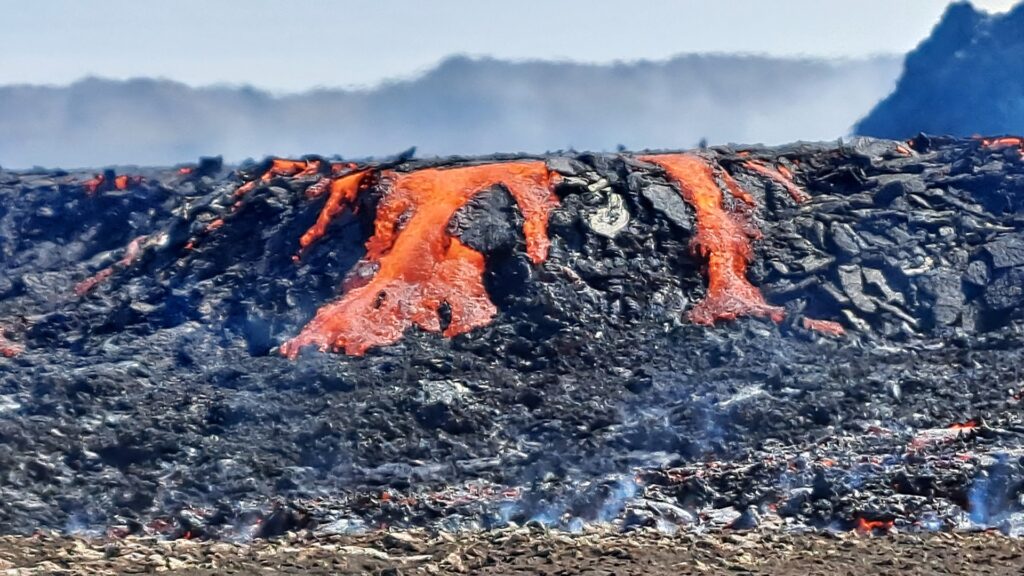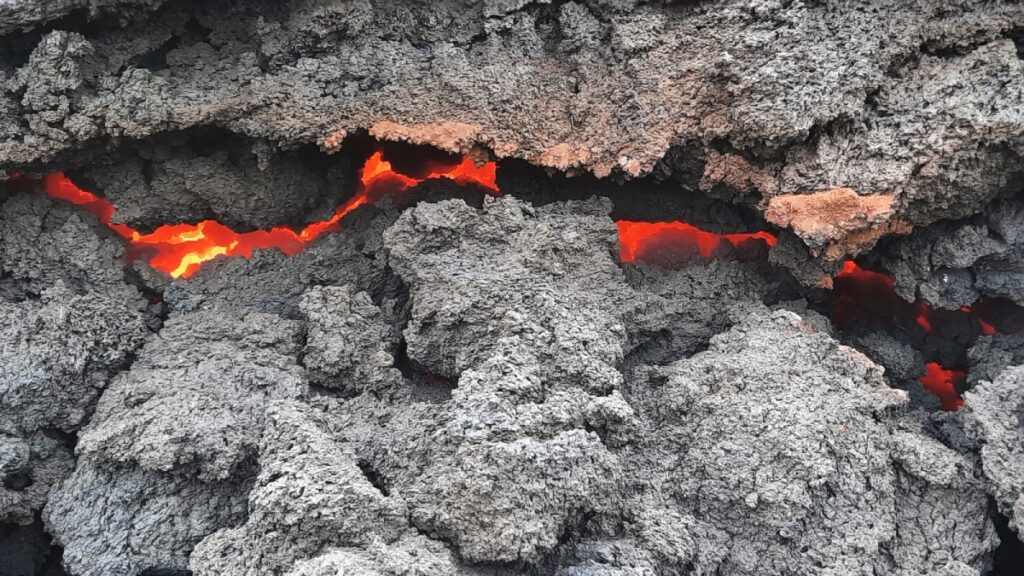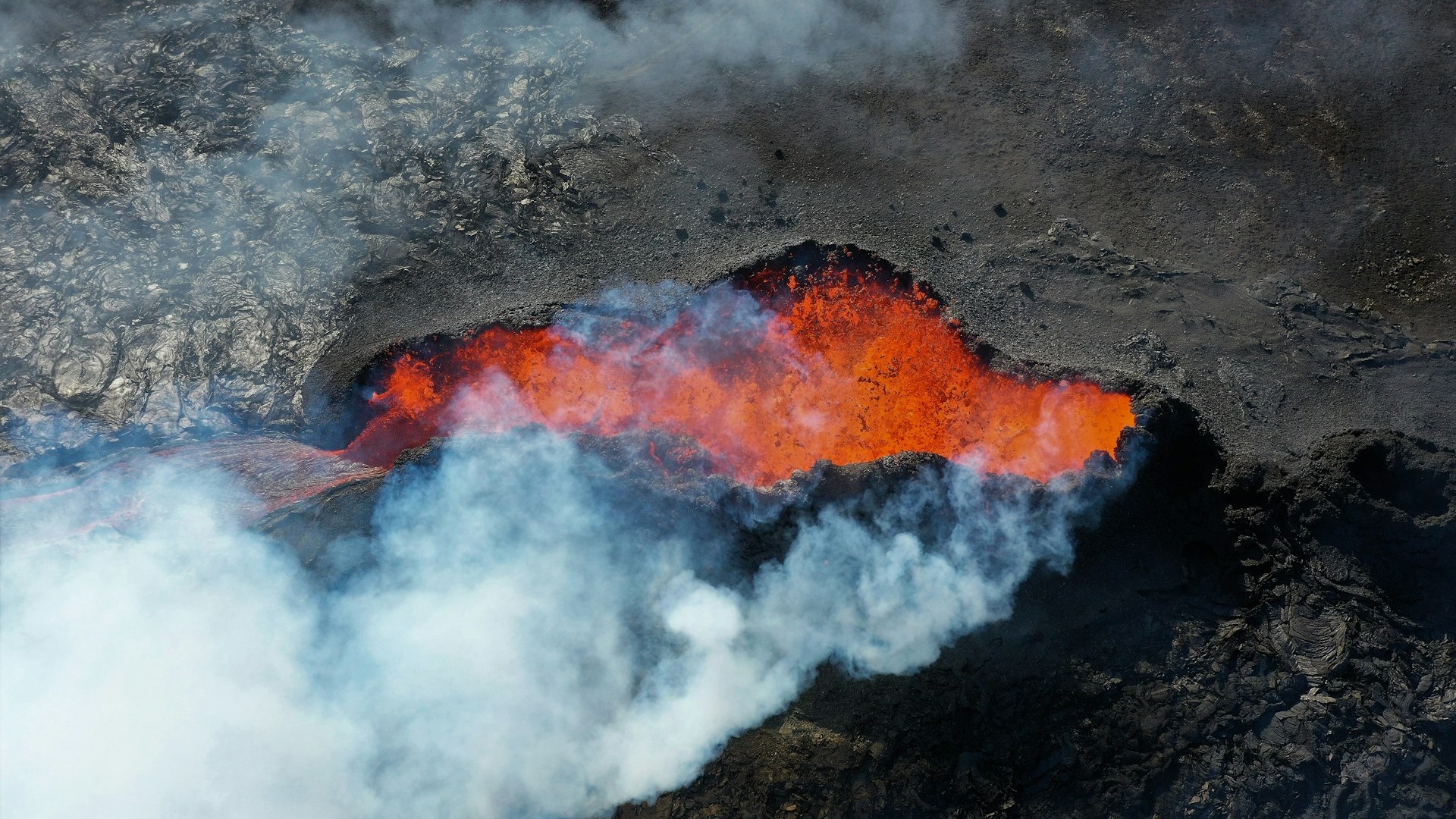In recent years, several volcanic eruptions have occurred on the Reykjanes Peninsula at the southwestern tip of Iceland. Here are the reasons why Iceland has so many volcanic eruptions, according to Valentin Troll, a volcanologist at Uppsala University.
There are five volcanic systems on the Reykjanes Peninsula. Valentin Troll says that the Vagradalfjall system and the Svartsingj system are the two systems that have erupted since 2021.
He is a professor of petrology and geochemistry at Uppsala University, and has closely followed the development of events in Iceland over the past years and months. At the end of 2023, Valentin Troll told forskning.se about the situation on the Reykjanes Peninsula. He was then going to head to the area to take samples and look at the lava — or “the lava monster,” as he put it.
The fact that Iceland has frequent volcanic eruptions has its geological reasons, says Valentin Troll. Iceland is located on a ridge spreading in the middle of the Atlantic Ocean. There, the North American and Eurasian continental plates are sliding apart at a rate of about two centimeters per year – and as a result, volcanoes are erupting on the ocean floor.
Hot materials flow upward
The main reason for the emergence of Iceland is the so-called mantle plume, which is located directly under the island. It carries hot materials from the depths of the earth to the surface of the earth, where volcanoes are formed.
The boundary between the Earth’s interior and its mantle is located at a depth of 2,900 kilometers. From here, the mantle plume flows upward and brings with it hot mantle material from the Earth's interior, Valentin Troll says.

There are many indications that the current volcanic activity will continue. In order to be able to say something about the future, it is important to understand what it looks like deep below the Earth's surface where magma is accumulating.
Several volcanoes active at the same time
-We're not entirely sure what's going on under the Reykjanes Peninsula. According to an early model, all materials come directly from the upper mantle. But it's a bit of a problem. It is difficult to understand why so many volcanoes are active at the same time. The magma stream will likely split, says Valentin Troll.
Another model that has been proposed is that there are many smaller magma chambers and that there are branches from them. In this case, it could explain why so many systems are active.

The third possibility is the presence of a large magma chamber in the Earth’s crust that supplies several volcanoes with magma through a network of channels. If this is true, we can expect many small volcanic eruptions, and perhaps several at the same time, in the coming weeks, months and years, says Valentin Troll.
Text: Uppsala University and research.se

“Falls down a lot. Internet fanatic. Proud analyst. Creator. Wannabe music lover. Introvert. Tv aficionado.”



More Stories
Big Fire at Halmstad Adventureland – VMA Released
Bernie Sanders attacks Benjamin Netanyahu
Journalists arrested in Russia